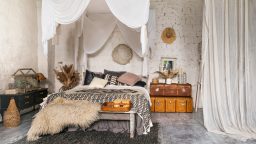Choosing the best artificial plants that look real indoor has become a practical way to bring texture, warmth, and greenery into a space without dealing with light conditions, watering schedules, or seasonal decline. High-quality faux plants now mimic natural colour gradients, leaf veining and organic movement so convincingly that, when styled corectly, they blend seamlessly into any interior. This article explores how to select lifelike artificial plants, what characteristics to check before buying, and how to style them for maximum realism.
What Makes Indoor Artificial Plants Look Truly Realistic
The best artificial plants that look real indoor share a few essential qualities. First, their foliage displays subtle shade variations and slight imperfections, similar to those found in natural leaves. A plant with identical patterns or overly glossy surfaces almost always reveals itself as fake. Secondly, realistic stems cannot be rigid or uniformly thick. Instead, they should have a flexible core that allows gentle shaping, giving the arrangement natural movement.
Another key detail is the potting. High-end faux plants usually come with soil-like textures, weighted bases or natural fibre coverings. Avoid versions set in plastic blocks or foam, as they are difficult to disguise and make the plant appear cheap. When possible, pair the plant with a ceramic or woven pot that complements your décor and hides the base entirely.
The Most Convincing Artificial Plants for Indoor Use
Among the best artificial plants that look real indoor, faux fiddle leaf figs remain a favourite thanks to their broad, textured leaves that naturally cast shadows and create dimension. Look for versions with irregular leaf orientation and a trunk covered in realistic bark patterns. These features prevent the sculpture-like stiffness that often exposes lower-quality replicas.
Monstera deliciosa replicas also stand out because their fenestrated leaves instantly draw attention. A good faux monstera should include leaves of varying maturity, from smaller, solid young leaves to larger ones with deep slits. This gradual progression creates authenticity and helps the plant integrate into both minimalist and eclectic interiors.
For smaller surfaces, faux ferns and eucalyptus stems are reliable choices. Ferns are especially suitable for shelves or bathrooms because their delicate fronds hide any artificial joints. Eucalyptus stems, with their muted grey-green tones, add a calming, elegant touch to desks, nightstands or dining tables.
How to Choose the Right Faux Plant for Your Home
Finding the best artificial plants that look real indoor requires evaluating scale, material and placement. Always measure the intended space before purchasing. A plant that is too small appears insignificant, while an oversized one can look out of proportion. In living rooms, taller floor plants such as palms, bird-of-paradise or olive trees bring balance to empty corners. Bedrooms benefit from medium-sized arrangements that introduce serenity without overwhelming the room.
Material quality matters just as much. Fabrics like silk or high-grade polyester fibres tend to hold colour better and feel softer to the touch. UV-resistant materials are particularly valuable if the plant will sit near a sunny window, as they prevent fading over time. For stems and trunks, choose plants with internal wiring that allows discreet shaping.
Placement enhances realism significantly. Position the plant where a natural one could genuinely survive—near windows, in bright hallways, or beside other organic textures such as wood, cotton, or stone. Good lighting helps highlight leaf texture and creates authentic shadow play.
Styling Tips for a Natural Look
Even the best artificial plants that look real indoor need thoughtful styling. Start by gently bending stems and leaves to mimic natural, non-symmetrical growth. Avoid perfect symmetry; plants in nature always have slight variations. Next, enhance the base. Filling the pot with decorative stones, moss or bark chips instantly elevates the visual appeal and hides any artificial elements.
When combining multiple faux plants, vary the leaf shapes to avoid repetition. Mix tall, structural plants with trailing varieties such as faux pothos or ivy to create a layered, botanical effect. If you’re styling a shelf, use small faux succulents and texture-rich greenery to break up books or neutral décor pieces.
Regular maintenance helps preserve realism. Dust leaves lightly with a microfibre cloth or a soft brush every few weeks. For stubborn buildup, a damp cloth is enough—just avoid soaking the plant, as excess moisture can loosen adhesives.
Where Artificial Plants Work Best Indoors
The best artificial plants that look real indoor perform exceptionally well in areas where natural plants often struggle. Dark corridors, small bathrooms, windowless offices or rental properties with unpredictable temperatures all benefit from lifelike greenery. Faux plants also provide consistent visual comfort in holiday homes or secondary residences where regular care isn’t practical.
In open-plan spaces, tall artificial trees help define functional zones. A realistic olive tree, for example, can soften the transition between a living area and dining space. Smaller plants are ideal for workspaces because they add calm and structure without introducing maintenance tasks.
The versatility of faux greenery also makes it suitable for homes with pets or allergies. Since no soil, pollen or toxicity risks are involved, they offer a safe, clean alternative without compromising aesthetics.
Bringing the best artificial plants that look real indoor into your home is an investment in long-lasting style and convenience. By selecting high-quality materials, paying attention to realistic detailing and styling them with intention, you can enjoy the lush look of greenery in any room. If you are unsure which plants suit your décor or need help assessing quality, consulting an interior stylist or specialist retailer can ensure you make the right choice every time.





